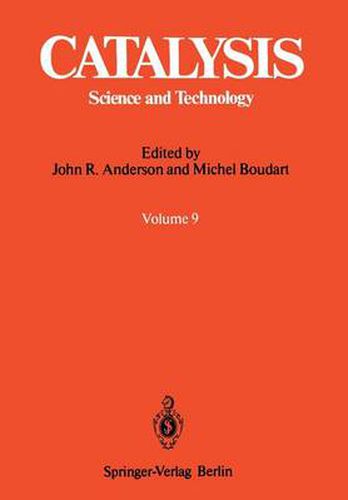Readings Newsletter
Become a Readings Member to make your shopping experience even easier.
Sign in or sign up for free!
You’re not far away from qualifying for FREE standard shipping within Australia
You’ve qualified for FREE standard shipping within Australia
The cart is loading…






This title is printed to order. This book may have been self-published. If so, we cannot guarantee the quality of the content. In the main most books will have gone through the editing process however some may not. We therefore suggest that you be aware of this before ordering this book. If in doubt check either the author or publisher’s details as we are unable to accept any returns unless they are faulty. Please contact us if you have any questions.
Our understanding of catalytic reactions exists at various levels which are mainly defined from detailed knowledge of reaction mechanism. When viewed in terms of the stoi chiometric reaction equation, most catalytic reactions are complex processes which occur via a sequence of elementary (i. e. irreducible) steps, and the elucidation ofthese elementary steps and the identification of a rate determining step (if one exists) constitutes the traditional approach to the problem of mechanism. The term traditional is not used here in a pejorative sense since mechanistic knowledge of this sort makes an important contribution to catalyst design, improvement, and optimization. This is the field which is discussed by Professor R. L. Burwell in Chapter 1 where the very wide range of useful approaches and techniques is made apparent, even when one is restricted to quasi-steady state conditions. Techniques which depend on observations under non steady state conditions (i. e. relaxation methods) have also been used in mechanistic studies, increasingly so in recent years. This topic is discussed in detail by Professor K. Tamaru in Chapter 2. At a deeper level of understanding, one may seek to enquire how an elementary reaction proceeds in terms of movement in a multicoordinate space where the variables define atomic positions and energy. This is a problem of great complexity even in relatively simple cases. Nevertheless, despite the problems some progress is being made, and this and allied topics are discussed in Chapter 3 by Professor G. L. Haller and Dr. G. W. Coulston.
$9.00 standard shipping within Australia
FREE standard shipping within Australia for orders over $100.00
Express & International shipping calculated at checkout
This title is printed to order. This book may have been self-published. If so, we cannot guarantee the quality of the content. In the main most books will have gone through the editing process however some may not. We therefore suggest that you be aware of this before ordering this book. If in doubt check either the author or publisher’s details as we are unable to accept any returns unless they are faulty. Please contact us if you have any questions.
Our understanding of catalytic reactions exists at various levels which are mainly defined from detailed knowledge of reaction mechanism. When viewed in terms of the stoi chiometric reaction equation, most catalytic reactions are complex processes which occur via a sequence of elementary (i. e. irreducible) steps, and the elucidation ofthese elementary steps and the identification of a rate determining step (if one exists) constitutes the traditional approach to the problem of mechanism. The term traditional is not used here in a pejorative sense since mechanistic knowledge of this sort makes an important contribution to catalyst design, improvement, and optimization. This is the field which is discussed by Professor R. L. Burwell in Chapter 1 where the very wide range of useful approaches and techniques is made apparent, even when one is restricted to quasi-steady state conditions. Techniques which depend on observations under non steady state conditions (i. e. relaxation methods) have also been used in mechanistic studies, increasingly so in recent years. This topic is discussed in detail by Professor K. Tamaru in Chapter 2. At a deeper level of understanding, one may seek to enquire how an elementary reaction proceeds in terms of movement in a multicoordinate space where the variables define atomic positions and energy. This is a problem of great complexity even in relatively simple cases. Nevertheless, despite the problems some progress is being made, and this and allied topics are discussed in Chapter 3 by Professor G. L. Haller and Dr. G. W. Coulston.